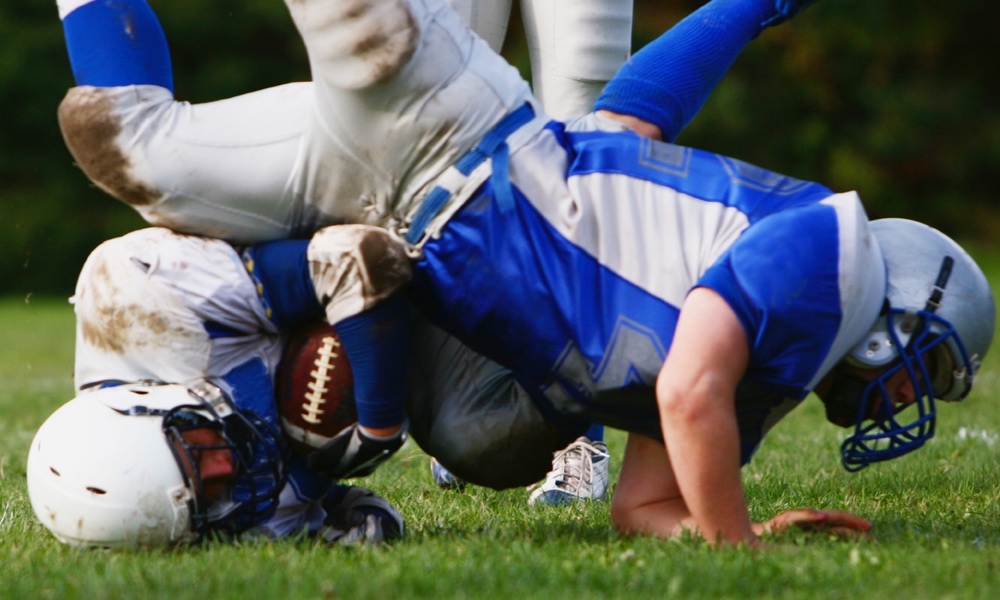Athletes who experience repeated hits are at risk for the progressive, neurodegenerative disease called chronic traumatic encephalopathy (CTE). Repetitive head impacts (RHI) have been linked to the risk for and severity of CTE in American football players, but professionals are not the only ones at risk.
Repeated knocks to the head can still affect the brains of those without CTE, and their effects have been found in athletes as young as 17 years old.
A team led by researchers at Boston University studied the brains of 152 young athletes identified by the Understanding Neurologic Injury and Traumatic Encephalopathy (UNITE) Brain Bank. They found these young brain donors with exposure to repeated head injuries had cognitive and behavioral symptoms related to brain trauma, even if they did not have CTE.
CTE has been reported in many elite older athletes, so it has become a common misperception that this disease is limited to athletes who have played sports at a high level for a long time, Ann McKee, an author on the study, told TheDoctor.Of the 152 athletes who had died before age 30, 128 were amateurs. All had a history of repetitive head impacts from playing contact sports such as ice hockey, football, soccer, wrestling and rugby.
“This study shows that the pathological changes of CTE start very early, and it can result from only playing amateur sports,” cautioned McKee, chief of neuropathology at the VA Boston Healthcare System and director of the Boston University CTE Center.
This series of case studies included only young athletes who had died before they were 30 years old to minimize any contribution of age-related health issues to the cause of death. Of the 152 athletes, 128 were amateurs. They had a history of repetitive head impacts from playing contact sports such as ice hockey, football, soccer, wrestling and rugby. Their brains were donated to the UNITE Brain Bank over a 14-year period.
CTE was diagnosed in 63 athletes (41.4 percent), 45 of whom were amateurs. Of those with CTE, 60 had mild CTE, stages I or II. Those who had CTE were more likely to be older and 71.4 percent were men. One woman with CTE played collegiate soccer. Among the men who played football, CTE was significantly associated with the length of their playing career — the longer they had played, the more likely they were to show signs of CTE.
The young athletes with CTE often had pathological evidence of brain injury. They were more likely to have enlargement of the cavities of the brain when compared to those without CTE. They were also more likely to show tearing of an internal membrane in the brain. Those with CTE had more perivascular macrophages, a type of immune cell that is increased in traumatic brain injury, in the white matter in their brain.
They also showed clinical symptoms that included depression (70 percent); apathy, or lack of emotion (71.3 percent); and difficulty controlling behavior (56.8 percent) and making decisions (54.5). Substance abuse was also common: 42.9 percent abused alcohol; 38.3 percent abused other drugs.
McKee and her team are setting up studies to evaluate living young athletes, to better understand changes to their brains and their symptoms during life. They are continuing to develop ways to diagnose CTE during life using blood tests, cerebrospinal fluid tests and brain scans. They are also pursuing potential treatments because young athletes are more likely to have the earliest stages of CTE that might respond better to treatment.
The study is published in JAMA Neurology.





